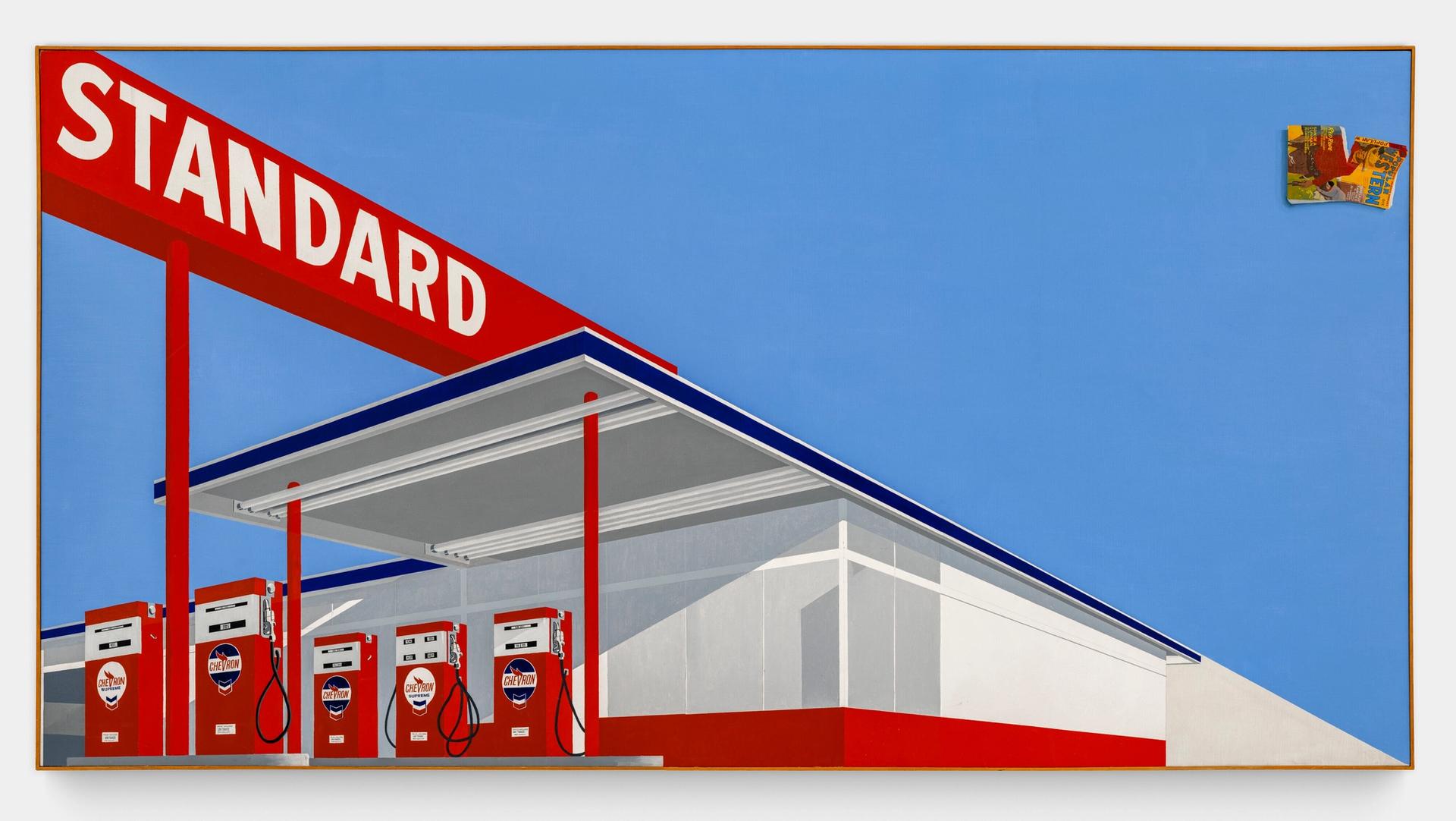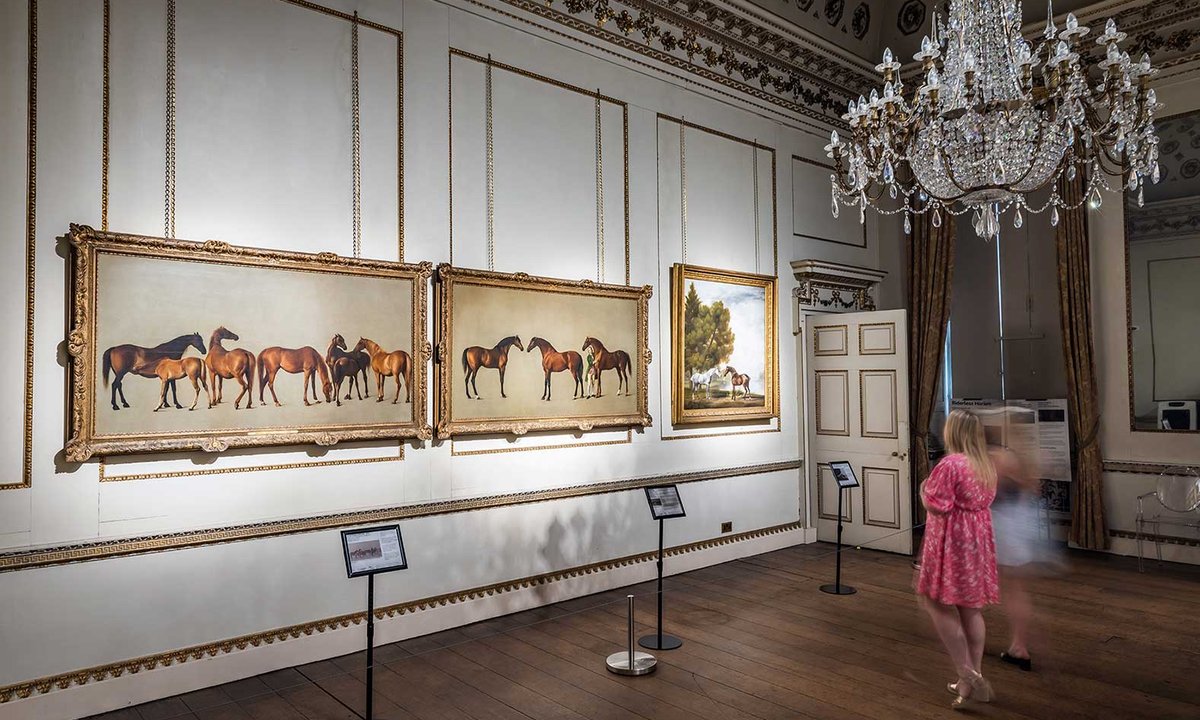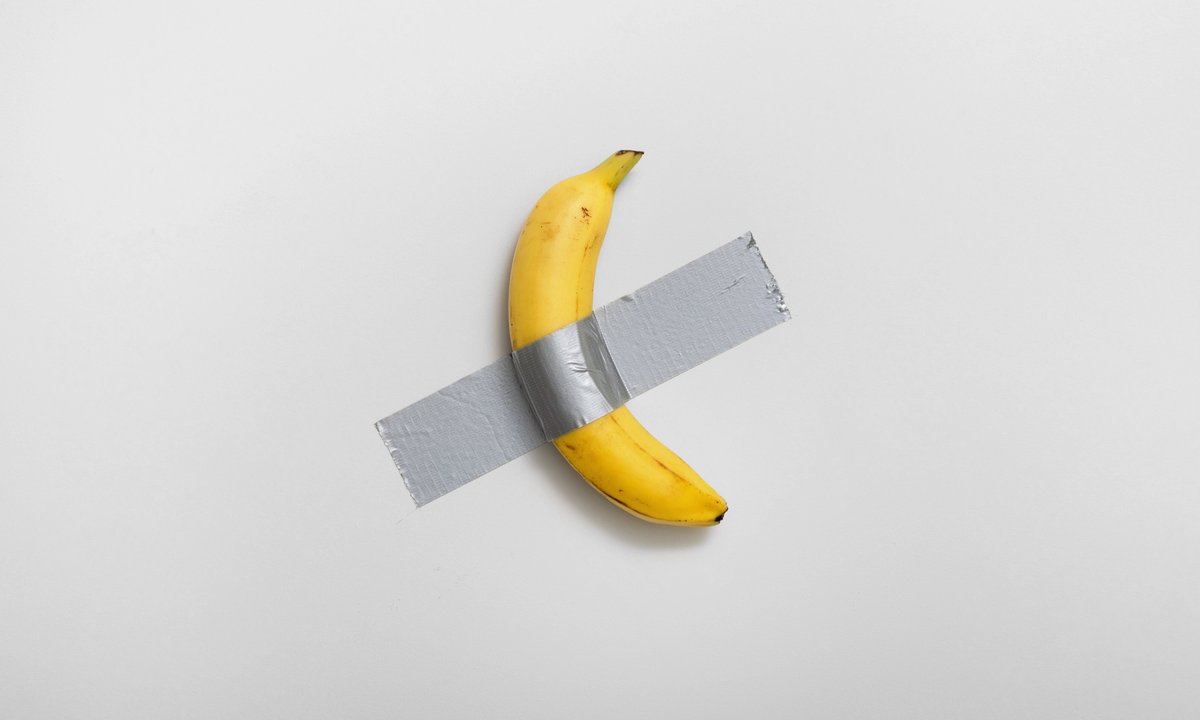Christie’s double-header evening auction of a storied single-owner collection and other 20th century art vaulted to $410m ($460m with fees) last night in New York.
Head-turning property from the estate of Mica Ertegun, the interior designer, socialite and wife of Ahmet Ertegun, the pop music magnate and co-founder of Atlantic Records, uncorked the night, totalling $157m ($183.9m with fees).
The elite group of 19 paintings and sculpture all sold, no surprise as it was fully guaranteed by Christie’s (three lots) and various third parties (16), hitting the high pre-sale estimate of $139m to $157m (estimates calculated without fees).
The seemingly endless four-hour evening started modestly enough with Fritz Glarner’s geometric aligned and Mondrian influenced Relational Painting Tondo No. 26, an oil and Masonite work from 1953, which brought $80,000 ($100,800 with fees).
The pace and price points quickly accelerated with David Hockney’s striking still life, Three Chairs with a Section of a Picasso Mural from 1970, inspired by the artist’s visits to the art historian and collector Douglas Cooper’s Château de Castille home in Provence. It realised $7.5m ($9m with fees) against an estimate of $4m to $6m. A second, considerably larger Hockney, Still Life on a Glass Table (1971) measuring 72in by 108in, sold to a telephone bidder for $16.2m ($19m with fees) against a $15m to $20m estimate. Ertegun bought both Hockneys in London in 1975 from the Cork Street dealer Leslie Waddington.

Still Life on a Glass Table (1971) by David Hockney
Courtesy of Christie’s
Surrealism played a sensational role in the collection with a trio of desirable Rene Magritte paintings. First was La Mémoire (1945), depicting a female neo-Classical bust, a splash of blood covering the right eye and flanked by a glass of water and apple. It made $3m ($3.6m with fees) against an estimate of $3m to $5m.
Next in line was Magritte’s La cour d’amour (1960), another mysterious painting dominated by a pair of vertical coffin shaped windows, one curtained and the other revealing a view of blue sky. It sold for $8.8m ($10.5m with fees) against an estimate of $9m to $12m. Ertegun acquired the painting from the long-closed Byron Gallery in New York in around 1968.
The star attraction—and shoe-in candidate for the most expensive work of the fall season—fell hard to one of Magritte’s ever startling L’empire des lumières series from 1954, a day-for-night masterpiece with blue skies perched above a street lamp lit house. It fetched a record $105m ($121.1m with fees) against an unpublished estimate in excess of $95m.
A bidder on the phone with Alex Rotter, Christie’s chairman of 20th and 21st century art, ultimately outgunned the Asia Pacific deputy chairman Xin Li’s telephone bidder across the room after a cat-and-mouse duel that began at $92m and bumped along in $500,000 and $1m increments.
Magritte painted 17 versions of L’empire des lumières and Ertegun bought hers from the artist’s solo exhibition at Byron Gallery in 1968, for a price believed to be in the mid-five figures. Last night’s price shattered the last artist high set at Sotheby’s London in March 2022 when another L’empire des lumières from 1961, similarly scaled but in a landscape format, brought £59.4m ($79.4m) with fees, nearly triple the artist’s previous auction record.

Arshile Gorky, Untitled (around 1943), sold for $3m
Courtesy of Christie’s
Of the four American artists featured in the sale, the Belgian surrealist would have appreciated Ed Ruscha’s trompe l’oeil composition Marble Shatters Drinking Glass (1968, 20in by 24 in) that hit $2.2m ($2.7m with fees) against an estimate of $1.2m to $1.8m.
Back on the European front, Joan Miro’s heart-throb image, Peinture (amour) from 1925 hailed from a playful series known as oneiric or dream paintings. It realised $4m ($4.8m with fees) against an estimate of $4m to $6m. It was another Charles Byron gallery purchase from 1968, quite the year for the Ertegun’s collection.
After a brief intermission, Christie’s marathon 20th century evening sale took off and eventually realised $253m ($302m with fees), falling short of pre-sale expectations for the 53 lots pegged at $265m to $375m (before fees). Six lots came backed with house guarantees and 21 with third parties. A dozen lots failed to sell, and three were withdrawn at the eleventh hour, including a Brice Marden painting, 9 (Air) from 1987-88, pegged at $10m to $15m.
The tally for the various owners segment of last night’s sale trailed far behind last November’s $543.4m (with fees) 20th century auction, which saw 63 lots sold.
Even so, the blue chip market marathon started with Marcel Duchamp’s revolutionary found object sculpture, In Advance of the Broken Arm, from a 1964 signed edition based on the artist’s now lost original—a hardware store bought snow shovel—from 1915. Consigned by the family of the Conceptual artist Joseph Kosuth, it made $2.5m ($3m with fees).
Two significant and guaranteed Joan Mitchell paintings sold to benefit Rockefeller University, the biomedical research facility founded by John D. Rockefeller in 1901, scraped through, with City Landscape (1958) hitting $14.5m ($17m with fees) against an estimate of $15m to $20m. The smaller and earlier Ab-Ex composition, Untitled (1955), went to the same telephone bidder manned by Xin Li for $7.8m ($9.3m with fees) against an estimate of $9m to $12m.

Ed Ruscha’s Standard Station, Ten-Cent Western Being Torn in Half (1964)
Courtesy of Christie’s
Both Mitchells were bought from Stable Gallery in 1958 by the family scion David Rockefeller, with advice from MoMA’s founding director Alfred H. Barr, Jr. and top curator Dorothy Miller.
A late and juicy Ab Ex era Willem de Kooning, Untitled (1982), living room sized at 60in by 54in, sizzled at $11.2m ($13.2m with fees), while an earlier, colour saturated work on paper abstraction by Arshile Gorky, Untitled (around 1943), sold for $3m ($3.6m with fees). The Gorky was featured in the artist’s 1982 retrospective at the Solomon R. Guggenheim Museum.
As a kind of post-digestivo to the record-setting Ertegun Magritte, a smaller, landscape version in gouache on paper, L’empire des lumières (1956) spectacularly rose to $16m ($18.8m with fees) against an estimate of $6m to. $8m. Five bidders chased the mini-masterpiece that was won again by Xin Li’s anonymous bidder. One might speculate that Asian bidding was head strong.
This was Magritte’s evening, as Le chasseurs au bord de la nuit (1928), an earlier and equally enigmatic work, brought $8m ($9.6m with fees) against an estimate of $6m to $8m. It last sold at Christie’s London in February 2014 for £6.5m with fees. Call it a wash.
Sculpture played a strong supporting role, with Alberto Giacometti’s slender and sublime 57½in high bronze, Femme qui marche (II) from a 1961 cast, selling for $22.8m ($26.6m with fees) against an estimate of $20m to $30m. Meanwhille Francois-Xavier Lalanne’s unique Grande Carpe Bar, in patinated sheet iron, nickel silver and painted wood from 1972, fetched $6.1m ($7.4m with fees).
Saving the best for last, Ed Ruscha’s Pop Art era masterpiece, the catalogue cover lot Standard Station, Ten-Cent Western Being Torn in Half (1964), a dual celebration of the American automobile and the Wild West, sold for a record $59m ($68.2m with fees) against an unpublished estimate in excess of $50m. The painting was recently featured in Ruscha’s travelling retrospectives at the Museum of Modern Art and the Los Angeles County Museum of Art, and Alex Rotter took the winning phone bid.
“The sale was solid as a rock,” the New York art advisor Kim Heirston told The Art Newspaper as she exited the salesroom. “I can’t believe there were that many lots.”
Tonight sees The Now and Contemporary sales at Sotheby’s in New York.







